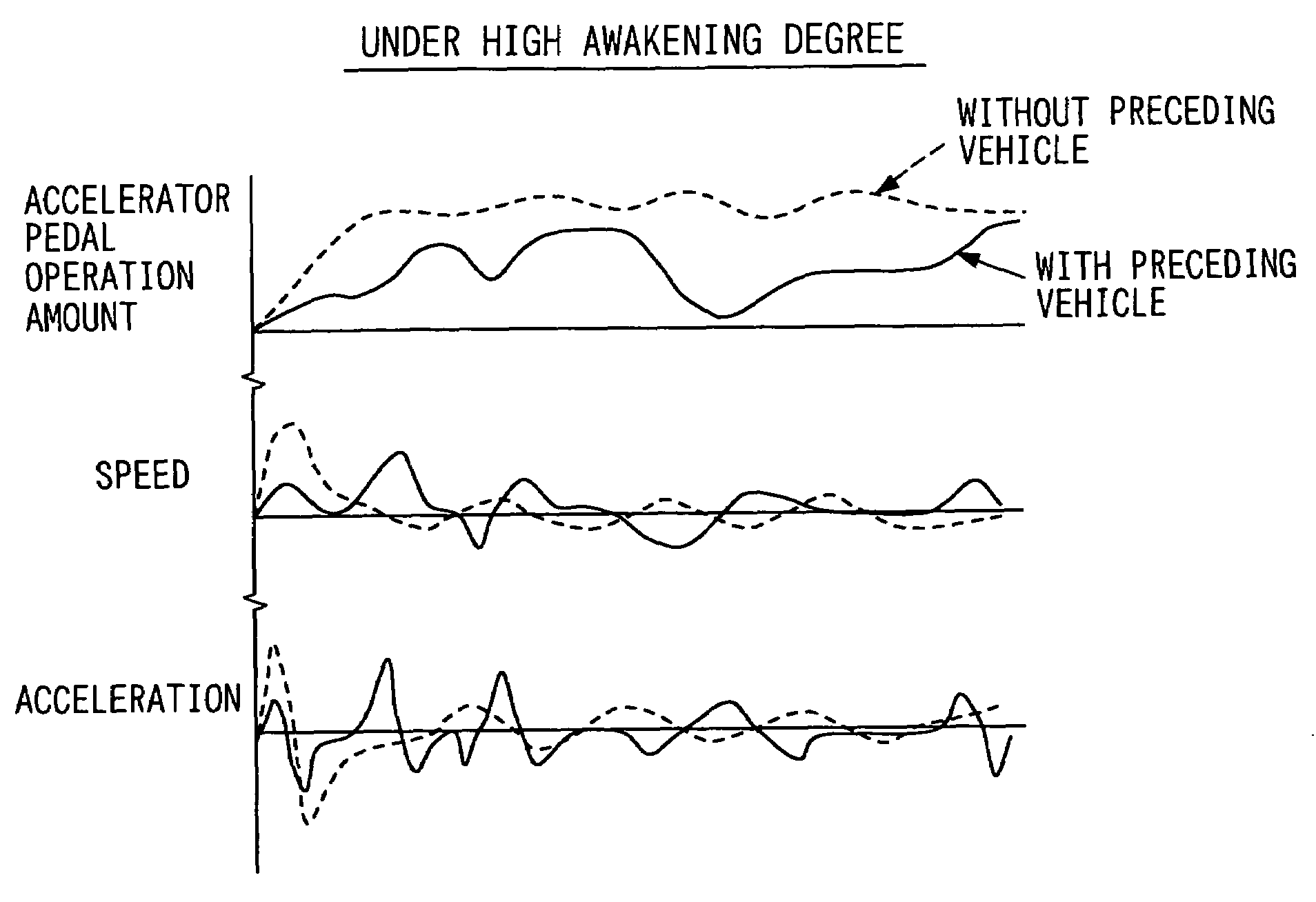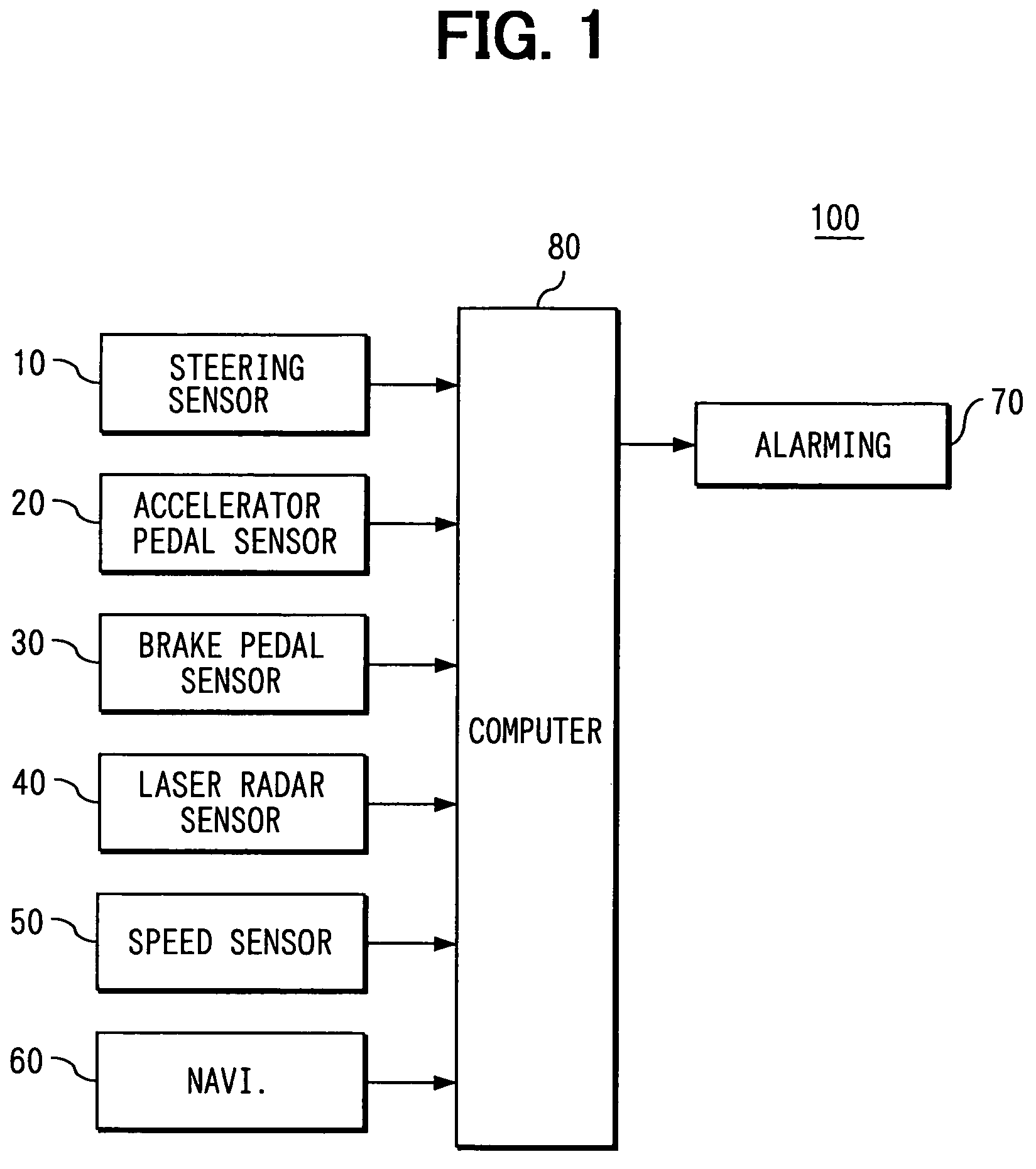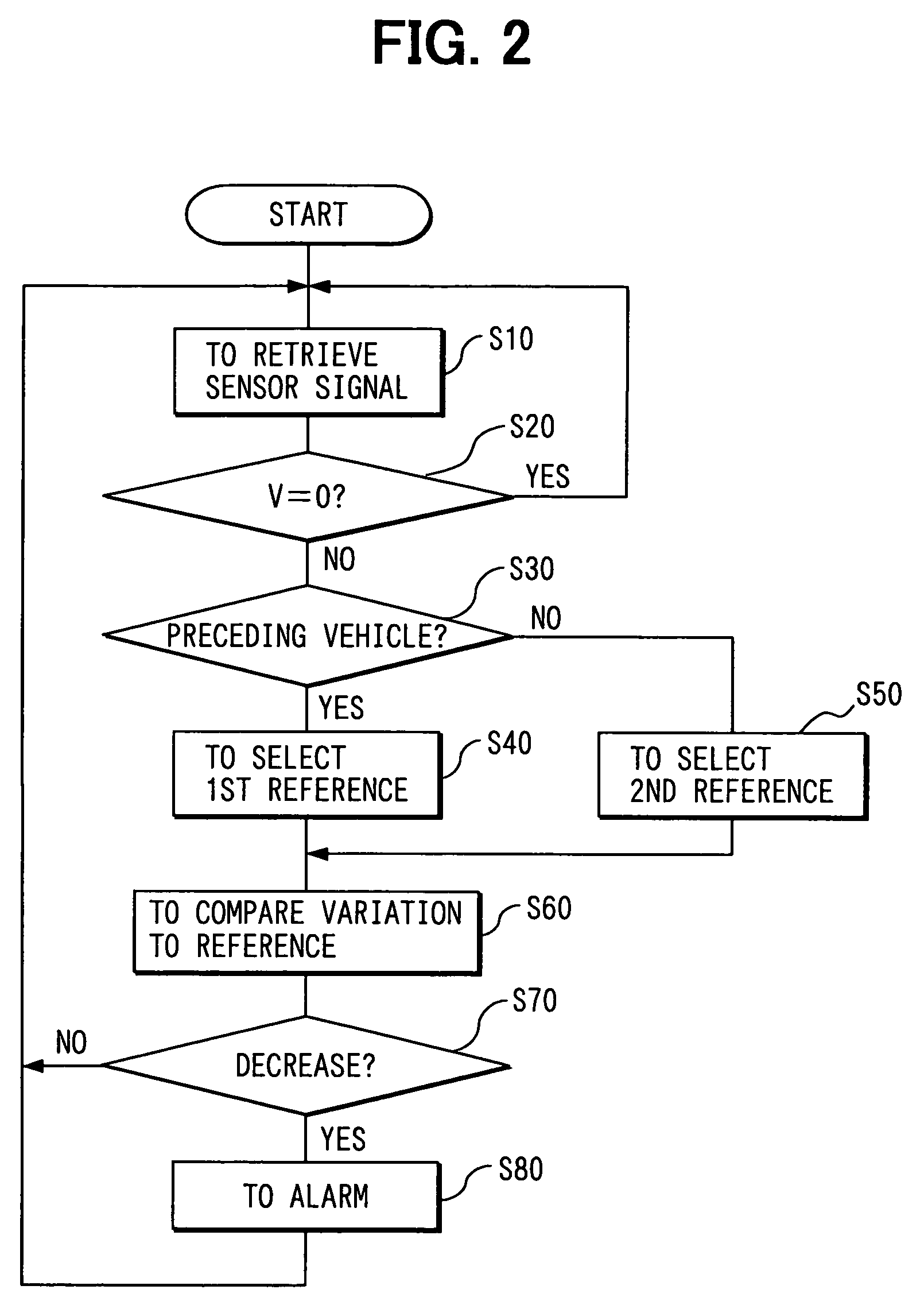Awakening degree determining system
a technology of determining system and awakening degree, applied in the direction of electric devices, vehicular safety arrangments, process and machine control, etc., can solve the problems of serious traffic accident, reduced awakening degree, and affected vehicle behavior, so as to enhance the accuracy of determining the awakening degree of a driver on a vehicl
- Summary
- Abstract
- Description
- Claims
- Application Information
AI Technical Summary
Benefits of technology
Problems solved by technology
Method used
Image
Examples
first embodiment
[0022](First Embodiment)
[0023]FIG. 1 shows a schematic overall structure of a drive assisting system 100 mounted in a (subject) vehicle according to a first embodiment. The drive assisting system 100 includes a steering sensor 10, an accelerator pedal sensor 20, a brake pedal sensor 30, a laser radar sensor 40, a vehicle speed sensor 50, a navigation device 60, an alarming device 70, and a computer 80 to which the foregoing sensors or the like are connected.
[0024]The computer 80 includes an input and output (I / O) interface (not shown) and various driving circuits (not shown). Hardware structure of the computer 80 is known, so that its explanation is eliminated here. The computer 80 determines whether an awakening degree of a driver is decreased or not based on a variation state of a driving operation that is performed by the driver and affects a vehicle behavior. When the awakening degree is determined to be decreased, warning is outputted to enhance the awakening degree of the driv...
second embodiment
[0053](Second Embodiment)
[0054]Next, a drive assisting system according to a second embodiment will be explained with reference to FIGS. 4, 5. The overall structure of the drive assisting system of this embodiment is the same as that of the first embodiment, so that the explanation is eliminated here.
[0055]In the first embodiment, the first and second determining references are previously determined and either of the first and second determining references is selected by whether the preceding vehicle is existing or not. However, since a characteristic of the driving operation is varied depending on a driver, the fixed determining reference sometimes results in missing of the proper determination for the awakening degree of a driver.
[0056]Therefore, in this embodiment, the upper and lower limits of the determining reference is determined based on an average that is computed from variation state of the driving operation while the driver is actually driving the subject vehicle. This en...
third embodiment
[0064](Third Embodiment)
[0065]Next, a drive assisting system according to a third embodiment will be explained with reference to FIG. 6. The overall structure of the drive assisting system of this embodiment is also the same as that of the first embodiment, so that the explanation is eliminated here.
[0066]The feature of the third embodiment is that, when the first and second determining references are computed with the same method as that of the second embodiment, the first and second determining references are computed while being classified based on road attributes. When the road attribute such as a road type of an expressway, a local road, etc; a road width; and a speed limit, is changed, variation states of the driving operations are changed. Computing the first and second determining references based on the road attribute thereby results in enhancement of the determining accuracy for the awakening degree.
[0067]The featured parts of this embodiment will be explained below with r...
PUM
 Login to View More
Login to View More Abstract
Description
Claims
Application Information
 Login to View More
Login to View More - R&D
- Intellectual Property
- Life Sciences
- Materials
- Tech Scout
- Unparalleled Data Quality
- Higher Quality Content
- 60% Fewer Hallucinations
Browse by: Latest US Patents, China's latest patents, Technical Efficacy Thesaurus, Application Domain, Technology Topic, Popular Technical Reports.
© 2025 PatSnap. All rights reserved.Legal|Privacy policy|Modern Slavery Act Transparency Statement|Sitemap|About US| Contact US: help@patsnap.com



